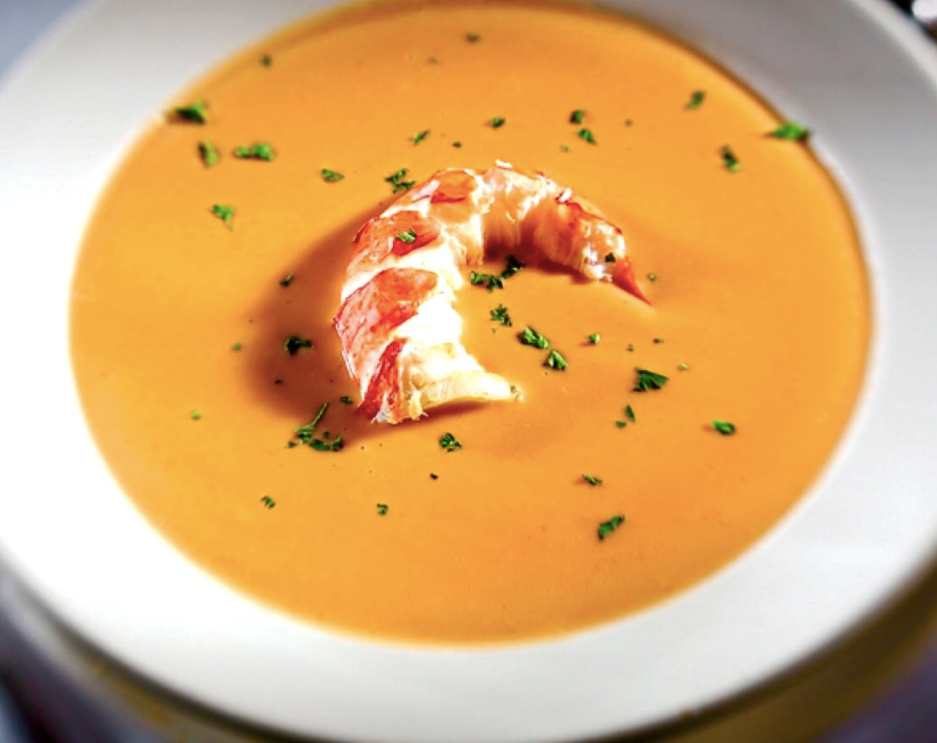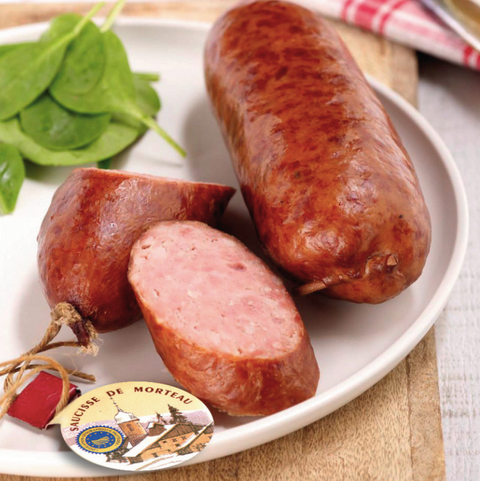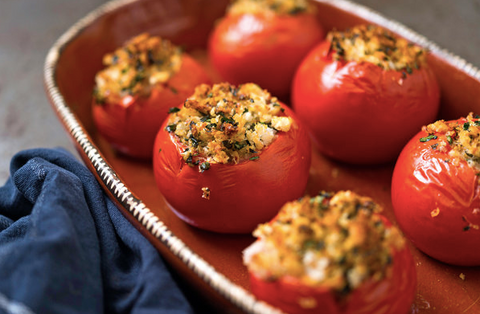Fresh ingredients are the cornerstone of truly superb French soups. Because the temperature and topography of France change with the seasons, regional preferences are based on what's available at the moment. Soup is a liquid food cooked by cooking lentils, vegetables, or meat in boiling water or stock until the flavor is extracted and a broth forms. Transparent and thick soups are traditionally divided into two categories in France. Clear soups are divided into two categories in France: bouillon and consommé. Purées are vegetable soups thickened with starch; bisques are puréed shellfish soups thickened with cream; cream soups are thickened with béchamel sauce; and veloutés are thickened with cream, butter, and eggs. Rice, wheat, and grain are some of the other components typically used to thicken broths and soups.
Using 'Cheveux d'Ange,' which are very fine pasta bits, is one of my favorite ways to thicken soups. Without a doubt, my boys will eat their soup with this in it. Soup is derived from the term "sop," which refers to a thick stew or soup that was traditionally soaked up with bread slices. The current definition of sop has been reduced to simply dipping bread. In the 16th century, the term "restaurant" was initially used in France to designate a highly concentrated, low-cost soup sold by street sellers known as restaurer and touted as a fatigue cure. In 1765, a Parisian businessman launched a store dedicated to restaurateurs. As a result, the term "restaurant" was coined to refer to these businesses. Making a hearty soup is simple; it can be a formal event or it can be made with whatever leftovers you have in the refrigerator.
When we think of France, we immediately think of Paris—the city of love—for a few moments before our taste buds start to dance and salivate at the prospect of French cuisine. There are many delectable broths and stews to select from in French cuisine, ranging from the basic French onion soup to savory bisques, the renowned Bouillabaisse, and the famed Consommé. As a result, we've compiled a list of traditional French soups that you should try at least once.
Creamy, aromatic, substantial, and hearty French chestnut soup. It has the potential to become your new favorite winter soup! Delicious chestnuts, onion, rosemary, a bouillon cube, milk, and butter are combined in this soup. If you're like us and spend the entire Winter creating soups, you'll enjoy this chestnut veloute! Next, try this vegetarian French onion soup, and browse our collection of French soup recipes for more delectable soup options. Onion, peeled and roasted chestnuts, rosemary, bouillon cube, milk, and butter are among the ingredients.
Make this chestnut soup your own by infusing it with your taste
- To make a chestnut pumpkin soup, add a pumpkin.
- To make a chestnut mushroom soup, add mushrooms.
- Before serving, add brandy to a chestnut and brandy soup.
- Bouillabaisse or French fish soup
Bouillabaisse is a delicious fish soup that can be found in many of France's top restaurants. The recipe, on the other hand, originated with a Marseille fisherman who was unable to sell his entire haul for the day. As a result, he developed a classic French fish soup with a combination of fish and shellfish. The ingredients in this Bouillabaisse are red snapper fillets, shrimp, mussels, and calamari.
A classic bouillabaisse contains at least three types of fish: European conger, sea robin, and red rascasse (Scorpaena scrofa). European hake, mullet, monkfish, turbot, and gilt-head bream are among the examples. Among the shellfish and other seafood, octopus, mussels, spider crabs, velvet crabs, and sea urchins are commonly featured. More expensive versions may include Langoustine / Dublin Bay Prawn, which is not a traditional Marseille fishermen's supper (Norway lobster). The liquid is cooked with potatoes, celery, onions, tomatoes, and leeks before serving the fish. On toasted bread slices, the broth is traditionally served with a rouille, a mayonnaise made with cayenne pepper, saffron, garlic, and olive oil.

- Potage Parmentier
Potage Parmentier is a typical French potato and leek soup served hot. It can be served as an appetizer, a side dish with meat dishes, or as a standalone afternoon snack. The soup is made with puréed potatoes and leeks (or onions, if you want) that have been cooked until smooth and delicate. Broccoli, asparagus, parsley, and parsnips are other good additions. Potatoes are always the main element in Parmentier meals in French cuisine. This is in honor of Antoine-Augustin Parmentier, French agronomic who promoted potatoes. Potage Parmentier is a similar potato and leek soup to vichyssoise. The latter is supposed to have been invented in the United States by a French chef named Louis Diat. Potage Parmentier is delicious with croutons and a dollop of cream on top.
4. Garbure
Garbure is a thick, traditional soup from the southwest of France made with stale bread, cheese, meat, and vegetables like carrots, onions, peas, and cabbage. Because the soup is traditionally served as a two-part dinner, the meat is frequently removed and served separately as a main dish with cornichons and pickled spicy peppers. Garbure is ideally prepared in a toupin, a tall, spherical ceramic pitcher. It gets its name from the Spanish word garbias, which means stew, or the French word garbe, which means bunch, and refers to the huge amount of vegetables in the soup.
- Soupe de poisson à la rouille
The classic French soup soupe de poisson à la rouille, a close cousin of the famous bouillabaisse, was once a poor man's diet. The soup is often cooked with white fish and boiled in a flavorful broth with saffron, garlic, olive oil, tomatoes, and other herbs. The soup is then drained and served with rouille, a traditional Provençal sauce made with bread, garlic, spices, egg yolks, and olive oil, with monkfish liver, tomatoes, and potatoes occasionally added. Soupe de poisson is a traditional Provençal meal served along the French Mediterranean coast, particularly in Marseille. It's commonly served hot as an appetizer with croutons and Gruyère cheese.
- Soupe au pistou
Soupe au pistou, a popular soup similar to Italian minestrone, is named after a classic French paste. The soup is produced with fresh seasonal ingredients and can be made using carrots, potatoes, beans, squash, peas, long green beans, or any other available vegetables. Pasta is frequently added to soups to improve the texture. Pistou is a classic French paste made of basil, olive oil, and garlic, with shredded cheese or tomatoes, added occasionally. Alternatively, the paste can be thoroughly blended into the entire pot of soup or placed in individual bowls for guests to swirl in and modify the flavor to their liking. Summer is the best time to make the soup because there are so many fresh vegetables available. This savory vegetable soup is thought to have originated in the 18th century and is now considered one of the most authentic Provençal recipes.
7. Soupe à l'ail (Tourin a l'ail, Garlic Soup)
Soup is one of the earliest meal combinations known to man, and it has a lengthy history in all cultures. Garlic is both a culinary herb and a vegetable in the south of France, so it's no surprise that garlic soup is so popular in regional cuisines like Occitanie and Provence. Because black pepper, one of the essential ingredients, was one of the most expensive spices at the time, soup à l'ail was only served on exceptional occasions and the tables of noble homes. Poached eggs and browned baguette bread slices are traditional French garlic soup accompaniments.
8. Tourin (Le Tourin d'Ail Doux, Smooth Garlic Soup)
Tourin, commonly known as smooth garlic soup or le tourin d'ail doux, is a French garlic soup. There are several variants on the recipe depending on where you reside. For a substantially stronger flavor, many recipes call for as many as 20 garlic cloves. Other recipes, on the other hand, use an equal amount of garlic and onions to balance the flavor. In a skillet, soften the minced garlic (and sliced onions if using) before whisking in the flour to produce a simple roux. The mixture is decreased by adding water or chicken stock and cooking on low heat. Egg whites are put in slowly, like in egg drop soup, but whisked quickly to avoid huge curds. An egg yolk that has been tempered with vinegar before being added to the soup thickens it even more.
9. Vichyssoise (Creme Vichyssoise Glacée)
Vichyssoise is a vegetable soup. Chicken stock, cream, potatoes, onions, and puréed leeks are used to make this substantial French soup. The soup's origins are disputed: some claim it originated in France, while others claim it was made in America. Some food historians claim the soup was invented by French chef Jules Gouffe in 1859, while others believe it was invented by Louis Diat, a French chef who worked at the New York Ritz-Carlton in 1859. He named the soup crème Vichyssoise glacée after his hometown of Vichy, which he named after his childhood potato and leek soup. The soup is normally served chilled, with chopped fresh chives on top.
10. Soupe à l’oignon (French Onion Soup)
Despite its humble beginnings as a peasant meal, French onion soup has evolved into one of the country's most beloved dishes. The broth is made out of caramelized onions and pork stock. The soup is distinguished by croûtes, crispy baked bread pieces served on top of the soup and generously topped in cheese. In the oven, the prepared dish is finished, enabling the cheese to melt and a golden crust to form on top. French onion soup has a long and illustrious history. This soup has been made with onions since Roman times, and a similar soup can be found in the middle Ages. This French classic evolved, eventually settling into its final form in the seventeenth century. Onion soup became one of the most well-known trademarks of French cuisine when it became famous around the world in the 1960s. It is now served as an appetizer in practically every traditional French restaurant.
- Consommé
This clear soup is made with a rich, clarified stock. It's a time-consuming, lavish, and costly dish that results in a fat-free, crystal-clear liquid broth. Consumé is said to have been inspired by a thick medieval soup, which evolved into the clear, savory dish we know today. Because it takes skill and time to produce, consommé is frequently served as an appetizer at formal occasions. It is typically decorated with mild-flavored components that do not overshadow the delicate soup, such as egg yolks or sliced vegetables. It can be used to make soups like double consommé, Brunoise, and French onion soup, to name a few. Consumé that has been chilled or jellied is another popular option. The original stock is thickened with gelatin removed from the bones during the preparation procedure, and both varieties are served chilled.
- Bisque
Cream, shellfish, cognac or wine, and a blend of spices are commonly used in this thick, creamy, and rich puréed soup. Some say it's named after a soup that's been made twice (bis cuits), because the traditional method involves roasting the shellfish first, then simmering them in the rich broth again. Another theory connects it to food from the Bay of Biscay, which includes spicy spices similar to those found in bisque. Bisque was first referenced in the 17th century as a shellfish soup, prompting food historians to speculate that it was initially a fisherman's dish meant to extract the maximum flavor from whatever ingredients were available. Nowadays, lobster bisque is the most popular version of the dish, and it's cooked with a long boiling process to ensure maximum flavor. Even though it isn't the most physically appealing meal, the dish's rich flavors, and textures more than compensate.




